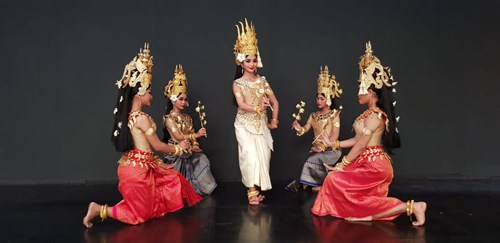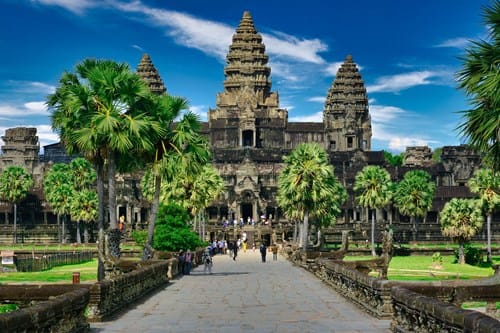As the cradle of the Khmer Empire, Cambodia offers a unique travel experience to any visitor. Despite its majestic temples and picturesque landscapes, what makes this nation truly shine is its well-persevered ancient charm. No visit to the kingdom would be complete without attending an Apsara dance performance, the country’s traditional dance.
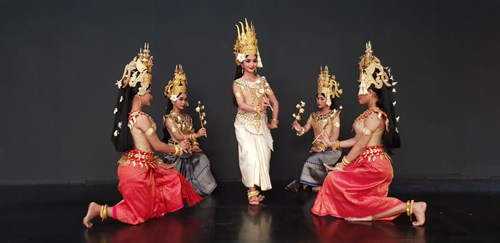
The Apsara is an essential part of the Khmer culture. Deeply rooted in Hindu mythology, Apsaras were divine female creatures that descended from heaven to entertain gods and kings with their enchanting dance.
History of Apsara
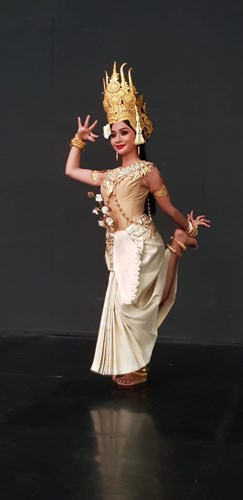
Dating back to the 7th century, the Apsara is a dance that depicts epic stories engraved on the walls of ancient temples. Legend says that as messengers between Gods and Kings, Apsaras would use their dances and beauty to combat evil and promote peace on earth.
Originally, the Apsara dances were meant to entertain the royal family and their guests. It is said that the Khmer king of the Angkorian era, Javayarman VII, had more than 3,000 female dancers at his court.
During the Khmer Rouge period (1975-1979), the royal ballet and most of the dancers were massacred. However, much to the influence of Her Royal Highness, Princess Bopha Devi, Khmer people dedicated themselves to preserving the dance by teaching it to the next generations. Princess Bopha Devi then became the face of the traditional Khmer dance in the 1950s and 1960s, both in Cambodia and around the world, and fought all her life for its revival.
The Features of Apsara
Traditionally, there are four primary roles in an Apsara dance: the male, the female, the giant, and the monkey (usually played by a male dancer). Dancers move so delicately and slow that they resemble moving statues stepping out from the carvings on ancient temples. Initially, only women could become dancers, even when playing male roles. But in recent years, the dance evolved to accepting men as well.
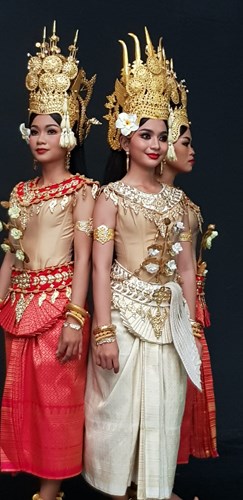
Each movement of the fingers has its distinct meaning, from worshiping the spirits of nature by depicting a blooming flower to symbolizing one of the hundreds of Buddhist and Hindu legends.
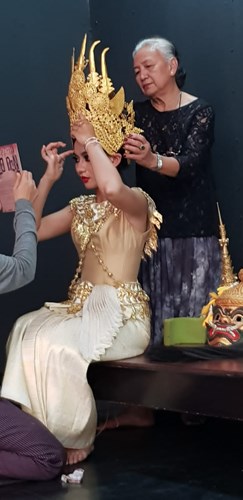
In addition, the dance is known for its beautifully-designed costumes, also based on the carvings on the walls of Angkor Wat. Dancers are dressed in silk draping known as “Sampot Sarabap” and accessorized with glittering golden temple-shaped headdresses, bracelets, and anklets. The costumes are sewn by the dancers before the performances.
Modern-Day Apsara
In 2003, UNESCO listed the dance as a Masterpiece of Oral and Intangible Heritage of Humanity. Today, many restaurants and theatres in the country offer Apsara dances as part of their evening entertainment.
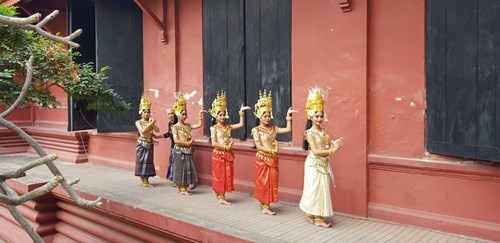
There is no better place to experience this unique dance form than at the Royal Ballet.
Phoenix Voyages organizes Apsara dance performances in the Angkor Temples for special groups. The Phoenix Voyages Foundation has also been supporting the Royal Ballet for years.
During a stay in Cambodia, an Apsara dance show is an attraction not to be missed. This traditional dance is an essential part of the country’s cultural heritage and will surely enchant any traveler.
